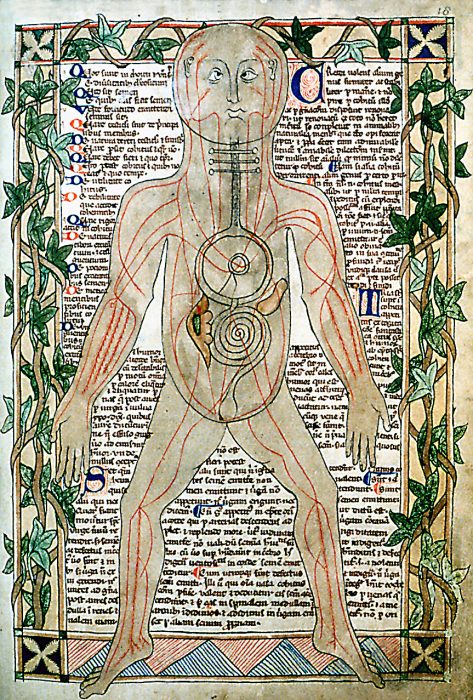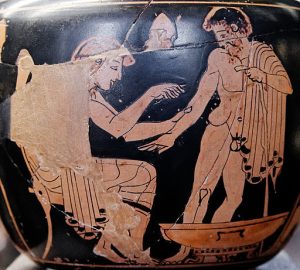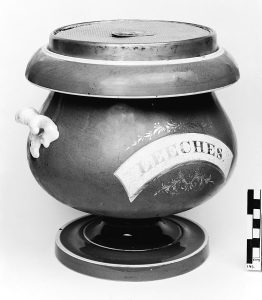Ancient World (about 3000BC-476AD)
2
Evie Frazier
introduction
Leech therapy is also known as, Hirudotherapy, uses a medicinal leech, called the Hirudo medicinalis. The leech is a part of the phylum Annelida and is used to remove blood from the host that it attaches itself to. These leeches have three jaws the include small rows of multiple teeth. When the teeth are sunk into the skin, anticoagulants in the blood are inserted into the host’s body through the saliva of the leech. The leech then sucks the blood from the host and can extract up to around 15 milliliters of blood.
Leech therapy was the prominent form of medicine in ancient Greece and effected how leeches were used in medicine for the rest of time. This medicinal practice was used in ancient Greece to let out “bad blood” to maintain a balanced health standard that was founded by Galen and Hippocrates. In this ancient civilization, leech therapy had a great impact on the medicinal world, and contributed greatly to how medicine was used after the ancient period.
Ancient Greece and Leeches

Ancient Greek medicine used leech therapy as a main tool in its practice. Hippocrates and Galen both supported the idea of the four basic humors: Blood, phlegm, black bile, and yellow bile. Their idea was that these humors must be balanced in order to be healthy (Greenstone,2010). This related to the Greek classical elements of air, water, earth, and fire. This is how the Greek people initially accepted Galen and Hippocrates’ idea, as it coincided with the already commonly believed Greek ideals. Galen was the first advocate for initiated bloodletting when he discovered that both veins and arteries were filled with blood and not air, which was a common belief at the time. He also believed that blood was stagnant and if it was left still for too long it would essentially “go bad”.
He created a complex system of how much blood should be removed and where it should be removed from, based on what the illness was. This was important because this was one of the first specific believed treatments for specific illnesses (Bloodletting, 2019). The practice of bloodletting using leeches became so popular at this time because of Galen, that a physician began to be commonly referred to as a “leech” (Britannica).

This ancient Greek pottery shows a physician using a leech on a patient as a method of bloodletting. Herophilos, another Greek physician, was the first scientist to perform scientific dissections on human cadavers and was said to be the first anatomist. He used leeches in order to drain the blood and other believed humors from the human cadavers, according to (History of Leech Therapy). This was important because it led to more of a discovery about the human body and allowed for more people to begin their own research. The leeches allowed the scientists to drain the blood out of the body without having to sever any veins for arteries and possibly damaging them, allowing these scientists to learn even more on how the body circulates and functions. Through the major use of leeches in the ancient Greek times, physicians were inspired to carry out leech therapy in future times.
Leech Therapy after ancient greece
The use of leech therapy in ancient Greece influenced and impacted the use of leeches into the middle ages, the early 19th century, and even modern times. In the middle ages, people began to look back and read Galen’s work and many physicians began to practice bloodletting using leeches again and even would do it based off the moon for increased effectiveness. The belief still stood that blood needed to be extracted to prevent it from becoming stagnant, which caused disease and illness. Small pox, the Plague, and Typhoid Fever ran rampant throughout society and most thought the only way to cure them was through bloodletting. It was also believed that the removal of fluids through leeches would cause a removal of a disease through organ heat, which was a more natural approach (Michalsen et al., 2007). The Middle Ages and the Medieval period were also a time of a religious revival where most of society was believing in witches, vampires, and a large amount of sin. They thought that sin resided in the blood, so in order to get rid of sin, they needed to get rid of their blood. So, in order to live a healthy, sin-free life, one must bleed out, which was commonly done by leeches. By the 19th century, Galen’s humoral system had been completely thrown out of the window. The theory was rejected after hundreds of years because physicians and anatomists began to locate disease in tissues and cells and determined that sickness resulted from changes in the organs. This meant that an imbalance in the four humors did not cause sickness and death. Although this was the new belief, leech therapy became a major practice during this time. In 1830’s France imported forty million leeches a year for medical purposed and England imported six million from France the next decade. In William Wordsworth’s poem, Resolution and Independence written in 1802, he references a man who is searching through water looking for leeches. He explains that he used to be able to find leeches all over, but now it was more difficult to find. He says…
“Once I could meet with them on every side; But they have dwindled long by slow decay;…”(Wordsworth).This part of the poem explains how high the demand for leeches were at this time and how people were collecting mass amounts of these leeches out of their habitats. After collecting the leeches, people often put them in leech jars. These jars were specifically made to hold leeches.
France even had “leech farms” and these farms weren’t even able to keep up with demand. –(Hyson, 2005, p.26). Physicians and even hospitals were applying up to ten to fifty leeches at a time and people noticed that after the leeches were removed, the person would continue to bleed. At the time people thought that was a good thing because it was getting even more of the illness out, but it was actually very bad for the body with so

me patients losing up to almost 80 percent of their blood in a single leeching (Britannica). In some European hospitals, they reported they drew more than 300,000 liters of blood annually. Leech therapy became an addiction in most European societies which leads to the idea that it was not a good technology. People went crazy for these leeches in a very unhealthy way. This also caused this type of leech to become endangered. In modern times, leech therapy has been approved by the FDA and is primarily used for surgical and reconstructive procedures and vascular diseases since the leech saliva can temporarily improve blood flood and can help heal connective tissues. They’re used to make sure that the tissues do not die by bringing the blood to the tissues to increase the blood circulation. As published in the Washington Post in 2004, the article explains how leeches were used as a post-surgical “last-ditch effort”. Multiple leeches are used to get blood flow to be normal when plastic surgeries are done like reattaching thumbs, noses, fingers or toes. As compared to the 19th century, the technology of leech therapy is looked at in a more positive light. The leeches are being used for real medical and surgical purposes and are not just being used to drain blood. There is also not a modern-day craze for the leeches, as what was seen in 19th century Europe.
Impact of leech therapy on society
When looking at the impact that the technology of leech therapy had on society during these different time periods, it is shown to be quite different. The impact of this technology during ancient Greece was profoundly positive. Once the leeches affects one blood and body became widely understood, people began to shift from a more religious idea of how the body worked to a more scientific way. Ancient Greece was a time of new thought and philosophy was used to make sense out of the world in a non-religious way. This sparked a society-wide want to learn more about science and body, as well as the increase in physicians that were performing the therapy. In the Middle Ages and Medieval times, society believed that all sickness, disease, and sin all revolved around the blood. The overall belief was that the blood had to be let out in order to be healthy and sin-free (Matteoni, 2009). Leech therapy did not necessarily have a good or bad impact on society at this time, but it served as a more religious impact than it had before. However, as compared to the 19th century, this technology had a poor impact on society at that time. When people caught on to the idea of bloodletting using leeches, a mass hysteria broke out. The desire for these animals skyrocketed and people were taking millions and millions of leeches out of ponds and bodies of water and building leech farms. This had a poor impact on the environment, as the food chain was affected, as well as having a poor impact on society because it sent everyone into a craze. When regarding the impact of leech therapy on today’s society, it is almost non-existent, or not as effective. This is most likely due to massive emergence of medical technology in modern times and there being much safer and more effective means of surgery and overall health maintenance. They are just used today by a few surgeons for very small invasive surgeries. Overall, leech therapy has had some type of impact throughout time.
Conclusion
Leeches have been used throughout history, as a way of therapy and bloodletting. In ancient times, it was used as a form of bloodletting in order to get rid of any sickness or disease as a result of Galen’s humoral theory. Its impact on society was positive, as well as important, but it sparked a society-wide want to learn about the human body and how it worked.
In the Middle Ages and Medieval times, religion was evident and there was a large belief in evil bodies and sin. Society practiced leech therapy because they believed that sin was held in the blood, so in order to live a sin-free life, you must consistently let out blood. Leech therapy did not spark any type of learning during this time, and did not have a negative effect on society, but it did have a more religious impact as compared to the more secular impact that it had in ancient times.
The 19th century saw a massive craze for leech therapy causing the formation of leech farms and a close endangerment of these animals, which led to a more negative impact on society during this time. In today’s society, there are highly modernized and innovative medical tools, so leech therapy is only possibly used in small invasive surgeries, meaning that it has little to no impact on society as a whole today.
Leech therapy was the main form of medical practice in ancient Greece and is made evident, and the technology behind leech therapy has continually been used throughout history and has led to the advancement in medical tools. Leech therapy as a whole made sense as a treatment during these times as it was a somewhat safe form of drawing blood. No matter the belief of why bloodletting was necessary, using leeches was a safe route to perform it. There was no possibility of nicking veins and bleeding out or cutting someone open, especially in earlier times when there were no qualified surgeons and people weren’t as educated on the human body. Although leech therapy’s impact on society has also continually changed throughout history consisting of different kinds of impacts, it was still a safe and sensible form of bloodletting.
- True or False: Leech therapy has had a positive effect on society throughout history.
- Multiple Choice: Whose research and work on the human body led to the use of leech therapy?
a) Leonardo DaVinci
b) Julius Caesar
c) Galen and Hippocrates
d) Isaac Newton - Short Response: What were the different effects of leech therapy on societies throughout history?
References
Bloodletting. (2019, October 25). Retrieved from https://en.wikipedia.org/wiki/Bloodletting#In_the_ancient_world.
The Editors of Encyclopaedia Britannica. (2018, November 21). Leeching. Retrieved from https://www.britannica.com/science/leeching.
History of Leech Therapy. Retrieved from http://www.amazingleeches.com/history-of-leech-therapy.html
Hyson , J. M. (2005). Leech Therapy: A History. Journal of the History of Dentistry , 53(1), 25–27. https://www.fauchard.org/system/publications/attachments/000/000/029/original/Leech-Therapy.pdf
Greenstone, G. MD,. The history of bloodletting. BCMJ, Vol. 52, No. 1, January, February, 2010, Page(s) 12-14 – Premise. https://www.bcmj.org/premise/history-bloodletting
Matteoni , F. (2009). Retrieved from https://www.medievalists.net/2013/06/blood-beliefs-in-early-modern-europe/
Michalsen, A., Dobos, G. J., & Roth, M. (2007). Medicinal leech therapy. Retrieved from https://ebookcentral.proquest.com
Wordsworth, W. (n.d.). Resolution and Independence by William Wordsworth. Retrieved from https://www.poetryfoundation.org/poems/45545/resolution-and-independence.
IMAGES
“Medical miscellany, anatomical illustration showing the veins.” by Anonymous, Bodleian Library is in the Public Domain
“Leech jar, 18th-19th century.” by Anonymous, Wellcome Collection is licensed under CC BY 4.0
“Clinic Painter “ by Bibi Saint-Pol is in the Public Domain
